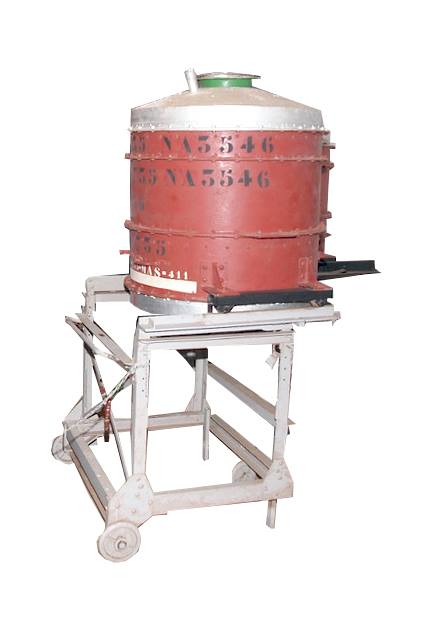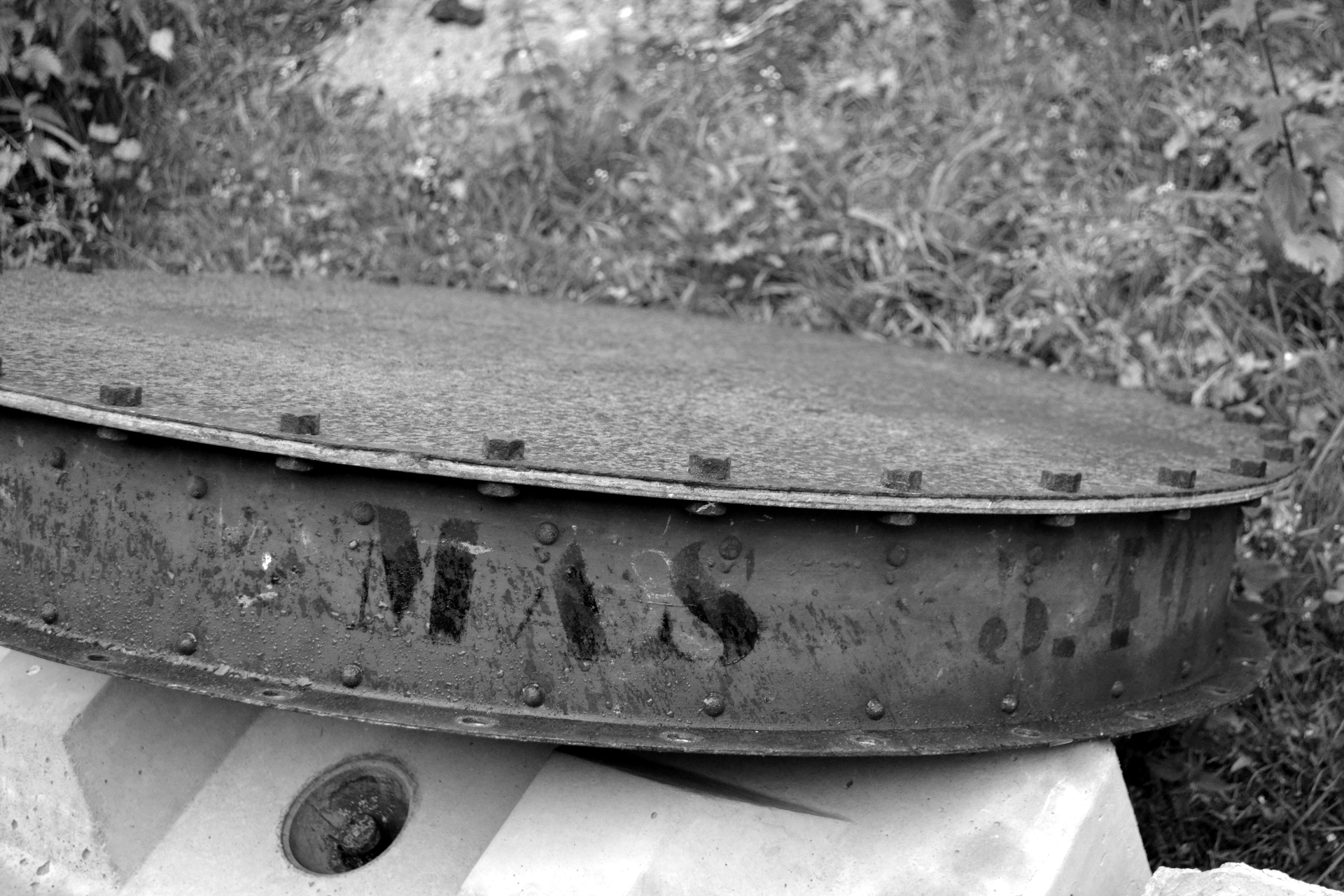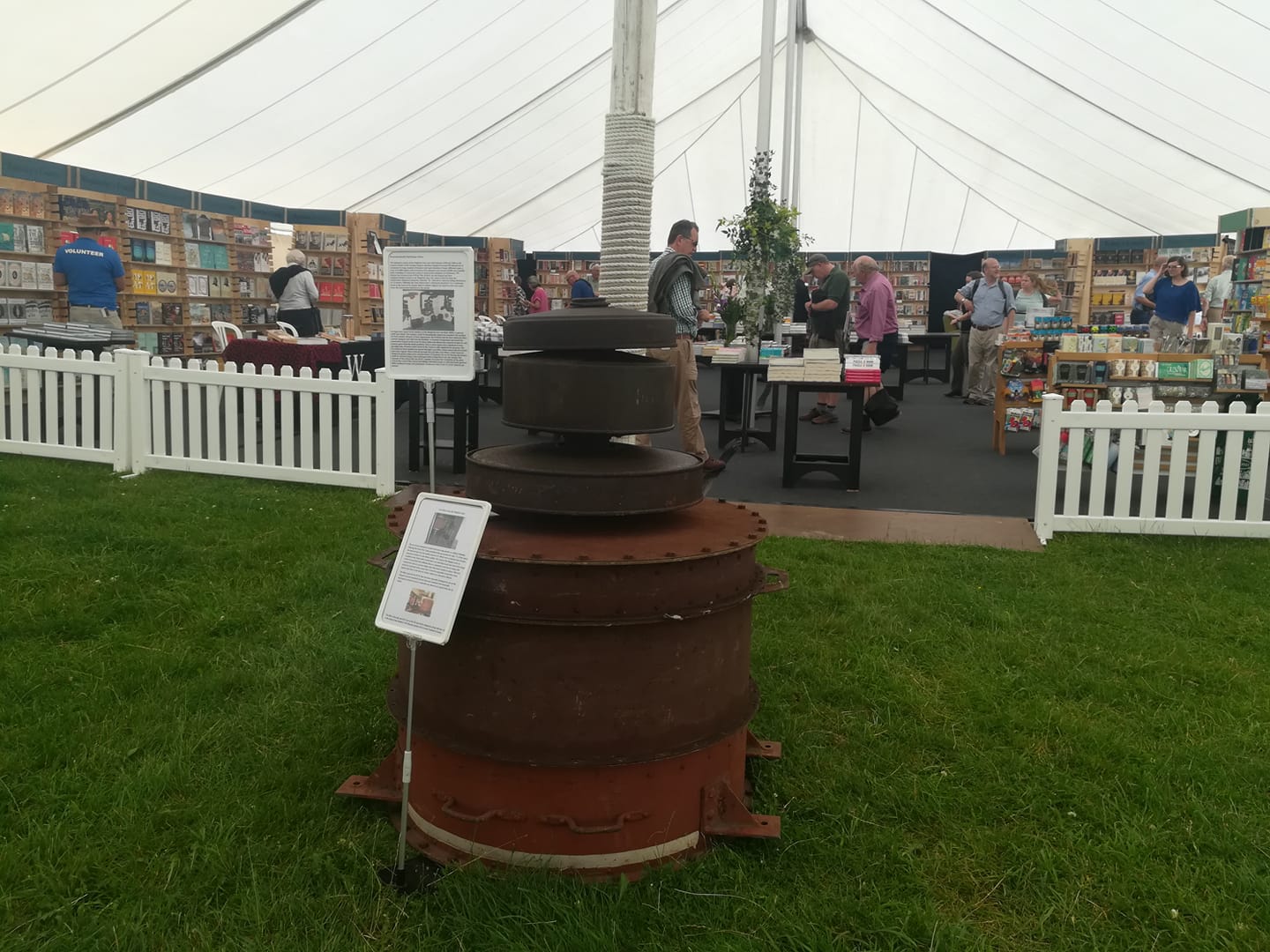
Example of an SP36 on handling carriage.
They comprised three sections; two of activated charcoal and chemically-impregnated paper filters (contained in 61 small cannisters, set into a steel plate), each filter could scrub 1000 cubic metres of air per hour. Larger works would see the filters arranged in batteries of 28, operating on a 14 on and 14 off principle. In the event of the filters becoming clogged or saturated, the standby section of 14 would be brought into use, allowing the crew to replace the spent units. In the smaller works of the casemates, a single filter would be installed. All works carried spare filters which would remain sealed with circular baffle plates, easily identified by a lead seal, to avoid confusion with any spent units. These baffles protected the filters' active parts from the ingress of moisture in the ambient atmosphere, which could severely hamper the efficiency of the filter.
Top charcoal section of the our filter at time of collection. Weighing nearly 300 Kg, it required dismantling for handling.
Unlike other filters used in fixed fortifications, the air is passed through the filter from the bottom. As the air being scrubbed came through ducting connected to the outside of a concrete construction, it was accepted that in the event of an artillery attack, a degree of dust would be generated. Had the filters accepted the air via the top, any solid contaminants present in the incoming air would easily settle on and block the filter. By drawing in the air from the base of the filter, the heavier particles would settle below the active inlet.
In order to check the efficiency of the individual units, differenal pressure gauges were used to monitor the flow either side of the filter. Any movement of the pointer on the gauge, in either direction, would indicate a blockage and warn the crew that the filter required changing. Once the filter became blocked, it would be isolated from the system and replaced. The filter would now be sent back to the Depot of Engineers, from where it would be returned to the manufacturer for refurbishment.
Our filter, reassembled. Displayed in the entrance of the Chalke Valley History Festival for the duration of the 2019 event. This was the public debut of the filter. The three sections sitting on top are a set of filter from the German Westwall.
Anyone who has visited a Maginot site will have seen the filters displayed as part of the internal fittings; beyond that, they are extremely rare to encounter. We have obtained a filter with the support of The Association Le PO du Haut Poirier et les Casemates d'Achen. It is the only such filter in private hands on public display in the United Kingdom.
Back
